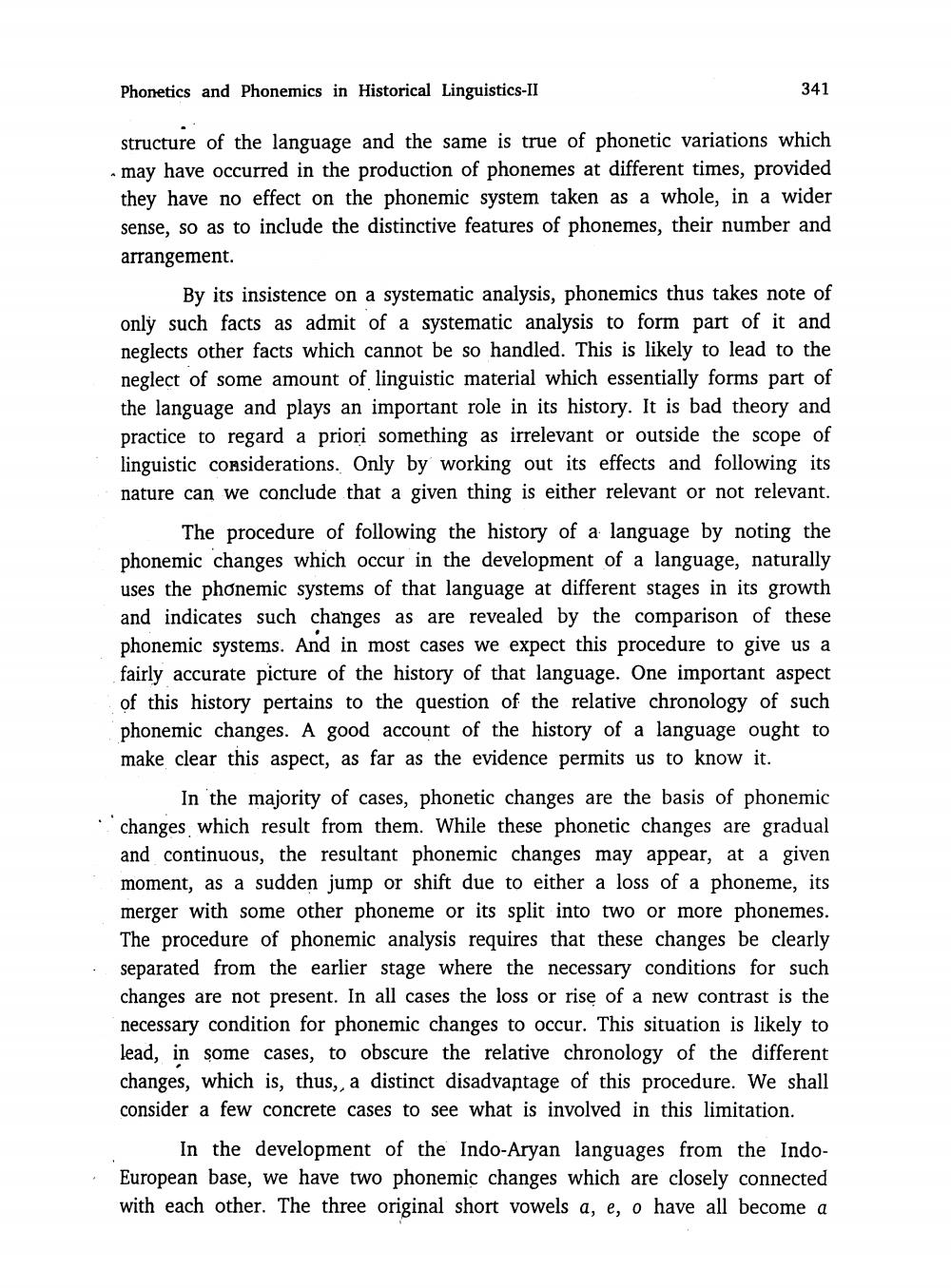________________
Phonetics and Phonemics in Historical Linguistics-II
341
structure of the language and the same is true of phonetic variations which . may have occurred in the production of phonemes at different times, provided they have no effect on the phonemic system taken as a whole, in a wider sense, so as to include the distinctive features of phonemes, their number and arrangement.
By its insistence on a systematic analysis, phonemics thus takes note of only such facts as admit of a systematic analysis to form part of it and neglects other facts which cannot be so handled. This is likely to lead to the neglect of some amount of linguistic material which essentially forms part of the language and plays an important role in its history. It is bad theory and practice to regard a priori something as irrelevant or outside the scope of linguistic considerations. Only by working out its effects and following its nature can we conclude that a given thing is either relevant or not relevant.
The procedure of following the history of a language by noting the phonemic changes which occur in the development of a language, naturally uses the phonemic systems of that language at different stages in its growth and indicates such changes as are revealed by the comparison of these phonemic systems. And in most cases we expect this procedure to give us a fairly accurate picture of the history of that language. One important aspect of this history pertains to the question of the relative chronology of such phonemic changes. A good account of the history of a language ought to make clear this aspect, as far as the evidence permits us to know it.
In the majority of cases, phonetic changes are the basis of phonemic changes which result from them. While these phonetic changes are gradual and continuous, the resultant phonemic changes may appear, at a given moment, as a sudden jump or shift due to either a loss of a phoneme, its merger with some other phoneme or its split into two or more phonemes. The procedure of phonemic analysis requires that these changes be clearly separated from the earlier stage where the necessary conditions for such changes are not present. In all cases the loss or rise of a new contrast is the necessary condition for phonemic changes to occur. This situation is likely to lead, in some cases, to obscure the relative chronology of the different changes, which is, thus, a distinct disadvantage of this procedure. We shall consider a few concrete cases to see what is involved in this limitation.
In the development of the Indo-Aryan languages from the IndoEuropean base, we have two phonemic changes which are closely connected with each other. The three original short vowels a, e, o have all become a




